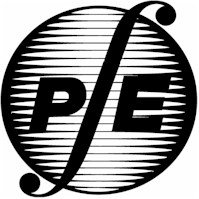 Idaho
Society of Professional Engineers
Idaho
Society of Professional Engineers
PO Box 170239, Boise, ID 83717-0239 208-426-0636 Fax: 208-426-0639 E-Mail: ispe@idahospe.org
|
PO Box 170239, Boise, ID 83717-0239 208-426-0636 Fax: 208-426-0639 E-Mail: ispe@idahospe.org |
|
|
|
|
The
next edition of the ISPE Friday Update will be 01/05/07.
Happy Holidays! February 3, 2007 - Northern Chapter MATHCOUNTS Competition - Lewiston February 5, 2007 Deadline for submissions of 2007 ISPE Award Nominations February 6 10, 2007 Idaho Society of Professional Land Surveyors Conference - Coeur d' Alene Casino - Worley, Idaho February 10, 2007 - Southeast Chapter MATHCOUNTS Competition Pocatello February 13, 2007 - Northern Chapter MATHCOUNTS Competition Coeur dAlene February 24, 2007 - Southwest Chapter MATHCOUNTS Competition - Boise March 10, 2007 State MATHCOUNTS Competition Boise State University, Boise March 22 & 23, 2007 ISPE 2007 Annual Meeting Oxford Suites, Boise May 11, 2007 National MATHCOUNTS Competition Convention Center, Fort Worth, Texas
30-60-90 right triangle is the length of the short leg times the square root of 3 or 4√(3). The area of the equilateral triangle is (base ื height) ๗ 2, which is (8 ื 4√(3)) ๗ 2 = 16√(3) square feet. Each side of the regular hexagon can be represented as p/6 = 4 feet. The area of a regular hexagon is equal to the area of 6 equilateral triangles with side length of 4 feet. The height of each equilateral triangle is 2√(3). The area of the regular hexagon is 6 ื ((4 ื 2√(3)) ๗ 2) = 24√(3) square feet. The ratio of the area of the triangle to the area of the hexagon is 16√(3) : 24√(3) = 2:3. The ratio expressed as a common fraction is 2/3.
For a right circular cone, the lateral area was given as π times the radius (r ) times the slant height (l ) of the cone or LA = π ื r ื l. Use the Pythagorean Theorem to find the slant height of the cone in December, 1990. 82 + 22 = l2. Solving for l, l = 2√(17). The lateral area of the tree in December 1990 was π ื 2 ื 2√(17) = 51.81 square feet. Each year, the tree grows 10% of the height and radius of the previous year for 16 years. This is modeled by 1.116 = 4.59. This means all of the linear measurements grow by this factor, including the radius and slant height. The lateral area of the tree in December, 2006 is then π ื (1.116)(2) ื (1.116 )(2√(17)) = [(1.116 ) (1.116 ) ื π ื 2 ื 2√(17) ] or (1.132) times what the lateral area was in December 1990. The surface area of the tree is (1.132) ื 51.81 = 1093.9 or 1090 square feet, to the nearest 10. 1090 light bulbs are needed to decorate the tree.
The volume of the smallest box is length ื width ื height = 4 ื 2 ื 1 = 8. The dimensions of the next largest box are: 1.2 ื 4, 1.2 ื 2, and 1.2 ื 1. The volume of this second- largest box is then (1.2 ื 4) ื (1.2 ื 2) ื (1.2 ื 1) or 1.23 ื (4 ื 2 ื 1) =13.82. The volume of each larger box increases by a factor of (1.23) over the volume of the previous box. This will occur four times going from the first box to the fifth box. The volume of the largest box is (1.23)4 times the volume of the smallest box. Expressed to the nearest tenth, the volume of the largest box is 8.9 times the volume of the smallest box.
http://www.mathcounts.org/webarticles/anmviewer.asp?a=943&z=107
|
National Engineers Week - Future City Competition
Board of Professional Engineers and Professional Land Surveyors
|
Send mail to ispe@idahospe.org with
questions or comments about this web site.
|